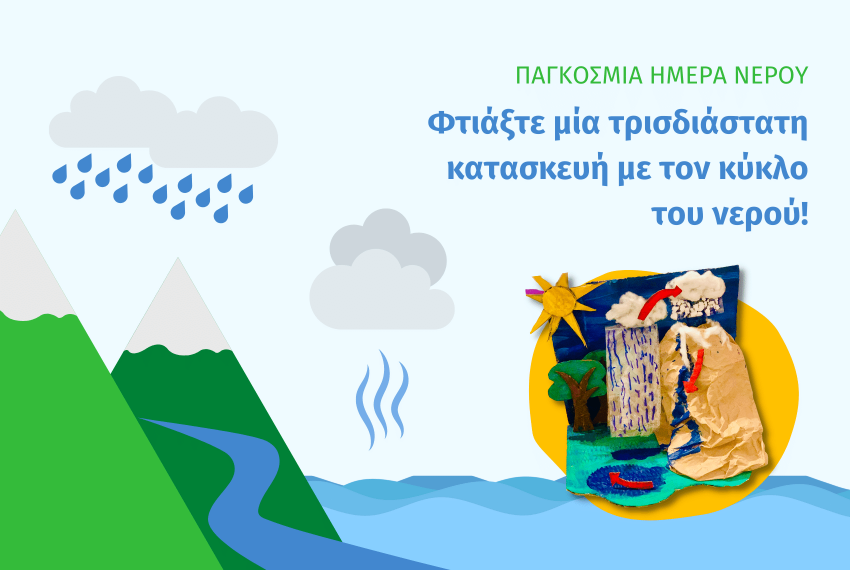Let's get to know an element of nature, the precious water!
Water is one of the most important goods of nature and it is necessary for our children to realize from an early age its importance for our lives and its journey in the natural environment.
Before moving onto the water cycle, it is important to talk about why the World Water Day was established.
Water, the so-called white gold, a source of life for humans, is unevenly distributed on the planet. One-sixth of the world's population, or more than 1 billion people, do not have access to clean water.
World Water Day was established at the 1992 United Nations Conference on Environment and Development in Rio de Janeiro, Brazil.
In its report, UNICEF is sounding the alarm for the lives of millions of children as it points out that 6,000 children in developing countries lose their lives every day (one every 15 seconds) from lack of water.
In Greece, the aquifer system is endangered mainly by pesticides but also waste, as the Organisation for Economic Cooperation & Development (OECD) characterises our country as one of which commits "waste of water".
Did you know that:
- Humans are made up of 70% water
- We waste 100 bottles of water for a single use of a washing machine
- 10 bottles of water when washing vegetables
- 100 large bottles when filling the bathtub with water
- 70% of the Earth is covered by water
- Only 1% of the Earth's water is drinkable
Water travels in the Natural Environment
The journey of water into the natural environment is called the "Water Cycle". The clouds create the water and when it rains they release it into the rivers which in turn transport the water to the sea. When the sun rises, some of the water from the rivers and seas evaporates and becomes clouds again, which will become rain again and again…!
Time for a simple experiment!
WATER: LIQUID-SOLID-GAS
To better understand the water cycle we can easily with the help of an adult do the following experiment.
1. Fill an ice bucket with water and put it in the freezer for a while. Observe the water turn into ice.
2. Put some ice cubes in a glass and let the glass sit in the sun. Observe that the ice melts and turns into water again.
3. Put the water in a saucepan and place the saucepan on the stove top. Observe that when the water reaches the boiling point, it begins to evaporate
Conclusion:
Water when found at very low temperatures turns to ice (solid form). When the ice heats up, it becomes water again (liquid form). When water boils it is converted to vapor (gaseous form). (from the textbook of Physics 5th grade)
Make a 3D construction with the Water Cycle:
How to make a 3D model of the water cycle with cardboard, hot glue (used strictly by adults only) and other basic items. Look carefully at the steps.
Materials required:
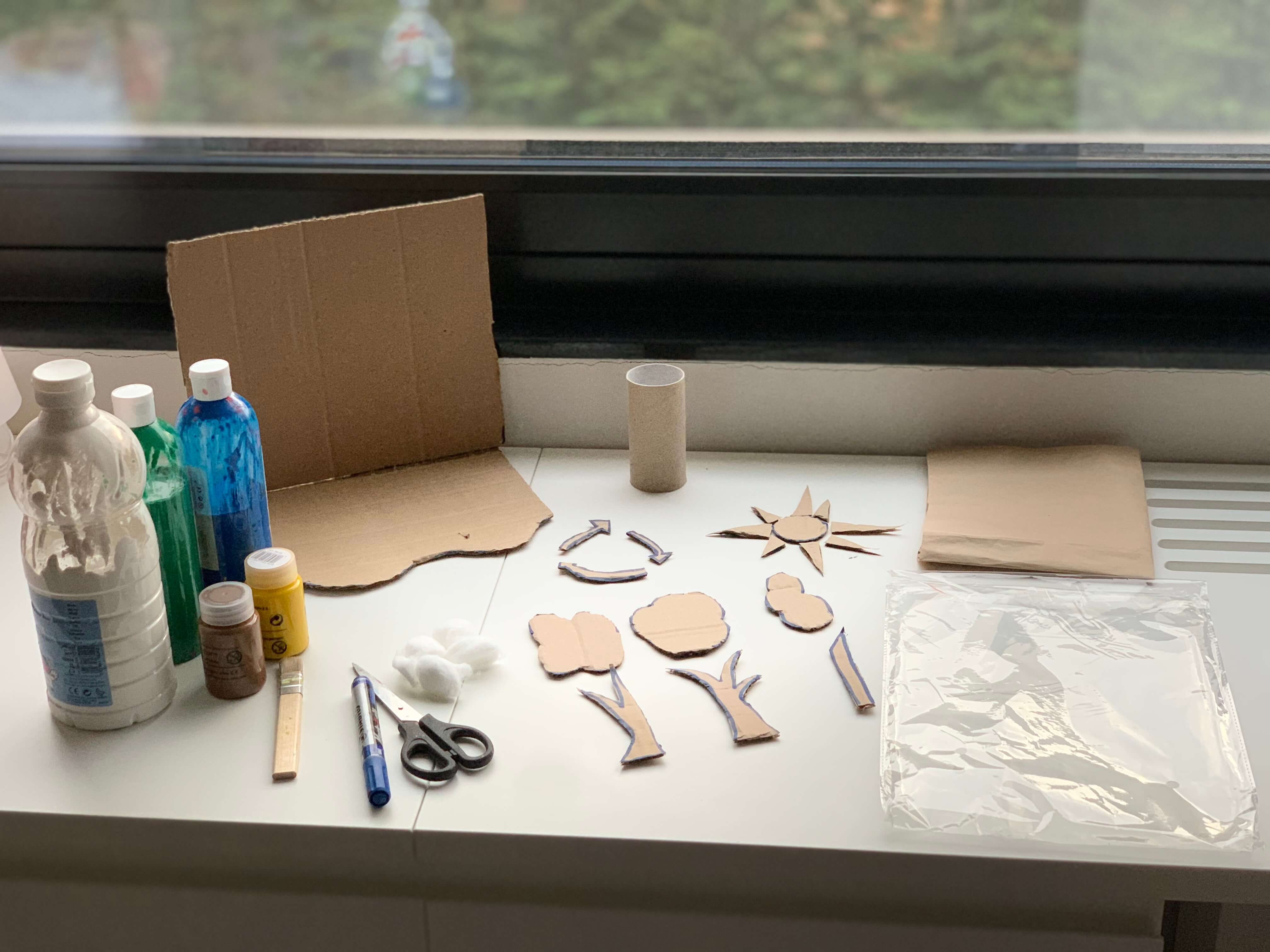
-Hot glue (used strictly by adults only)
-Cardboard waste (box)
-Acrylic Paints for children (brown, yellow, blue, white, green)
-Cotton
-Glue
-Pair of scissors
-Paintbrush
-Cutter
-Craft wrapping paper
-Toilet paper roll
-Transparent construction cellophane
- Blue marker
-Styrofoam shavings
Instructions:
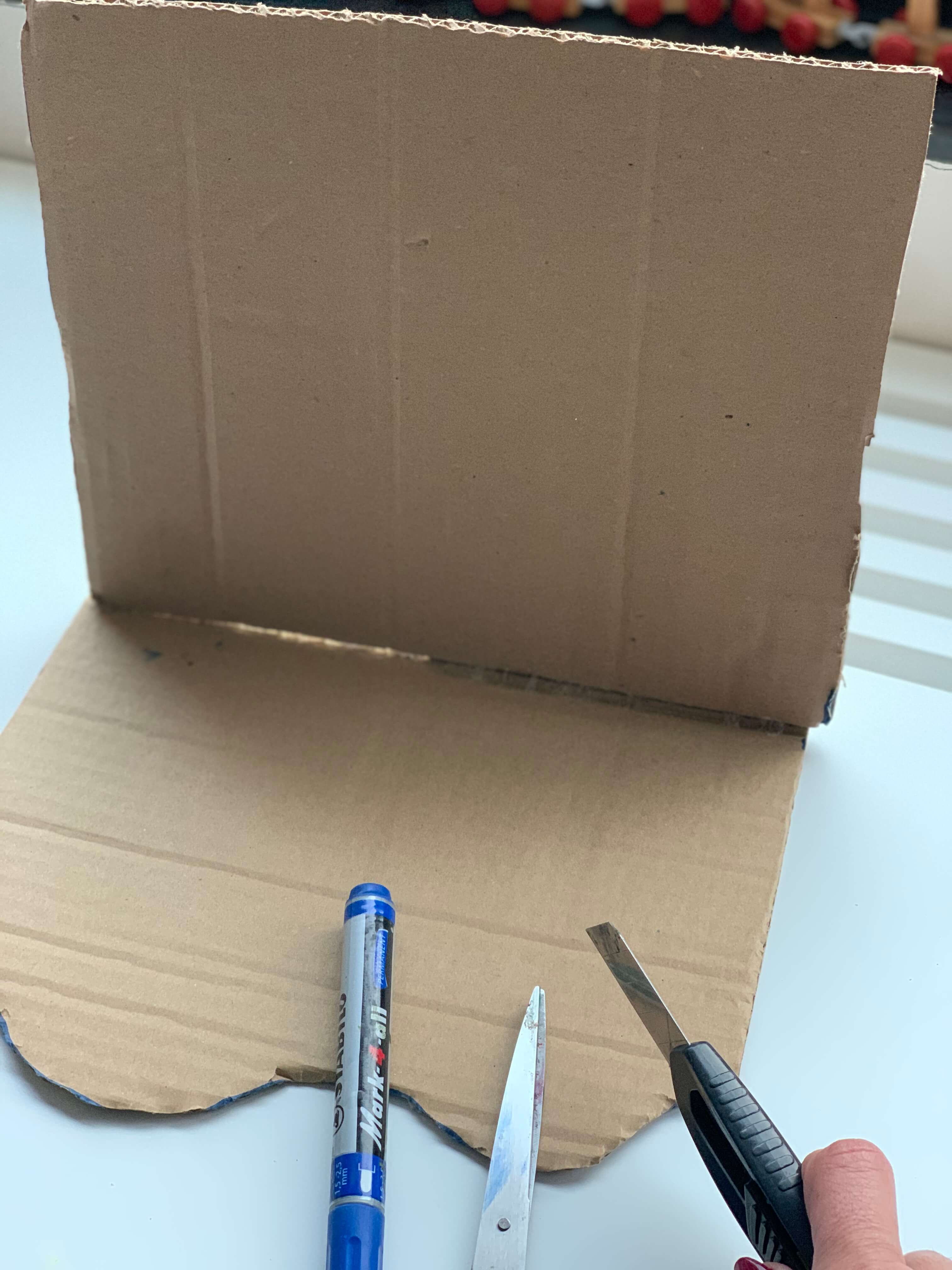
1. Cut with the cutter, two pieces from the carton and join them on one side with the hot glue forming a right angle. In the piece below we form a wave on the edge and cut it with the cutter.
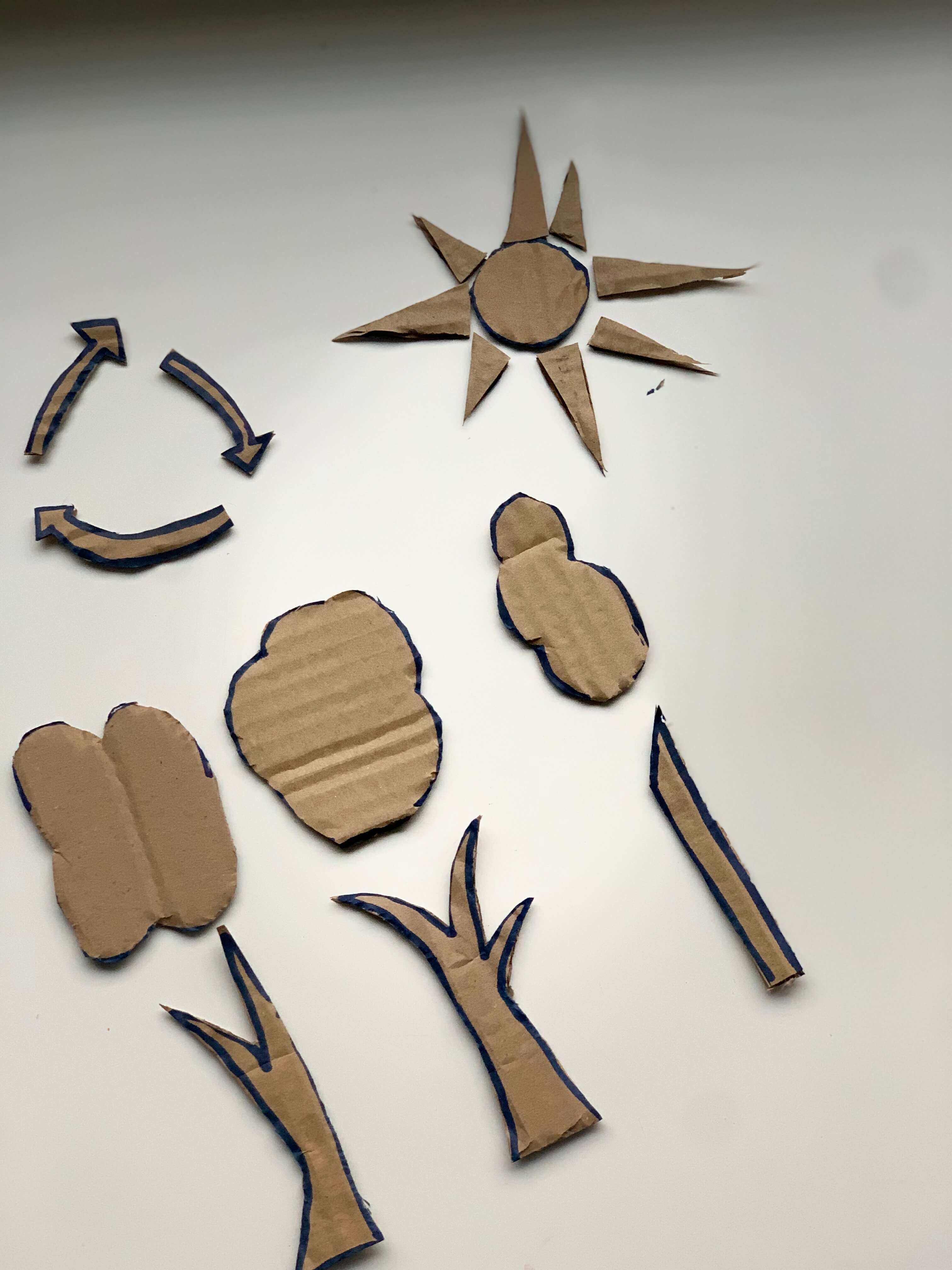
2. On the cardboard scraps, draw tree trunks, tree foliage, sun with rays and three darts in a circle. Carefully cut them with the cutter.
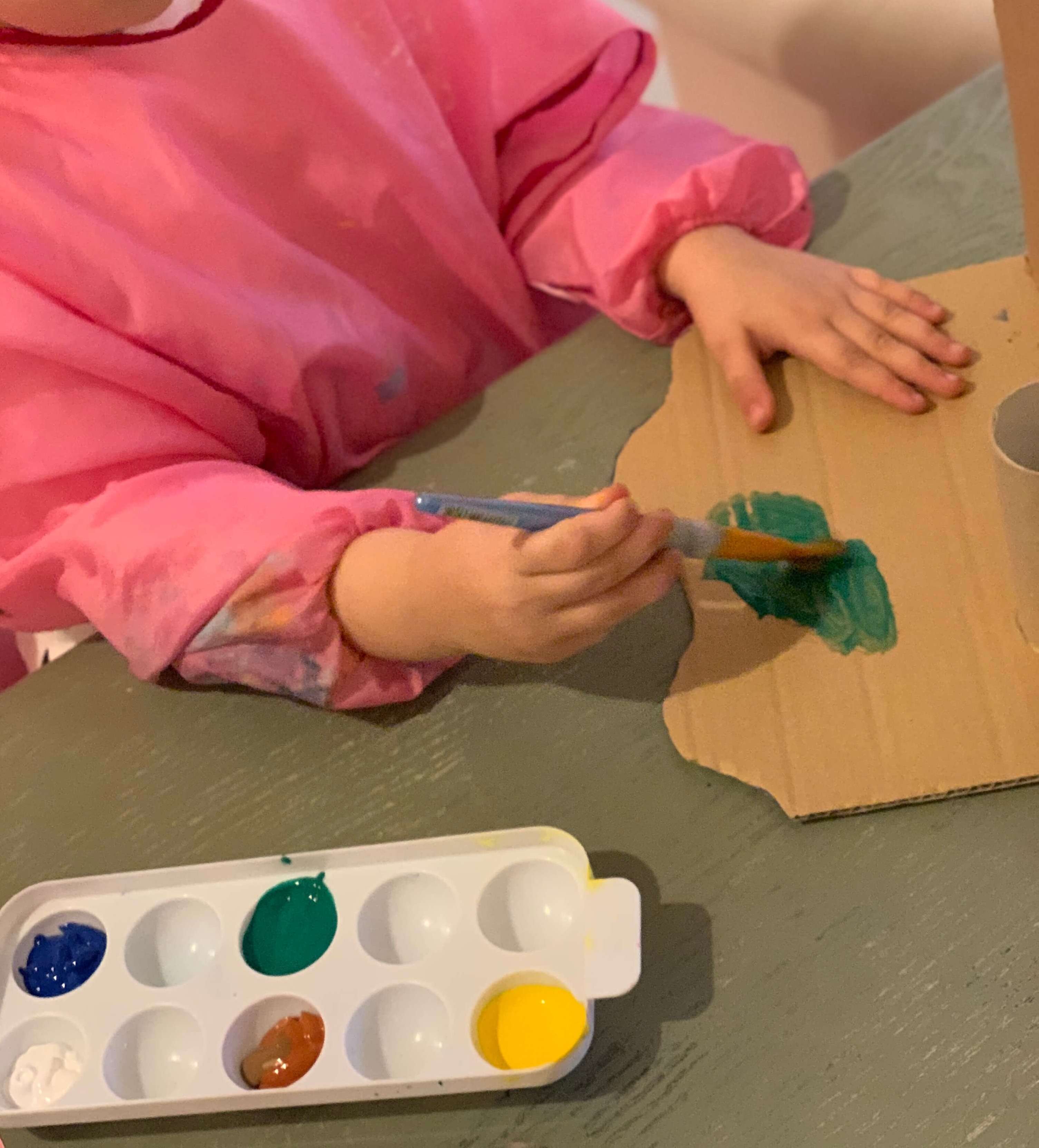
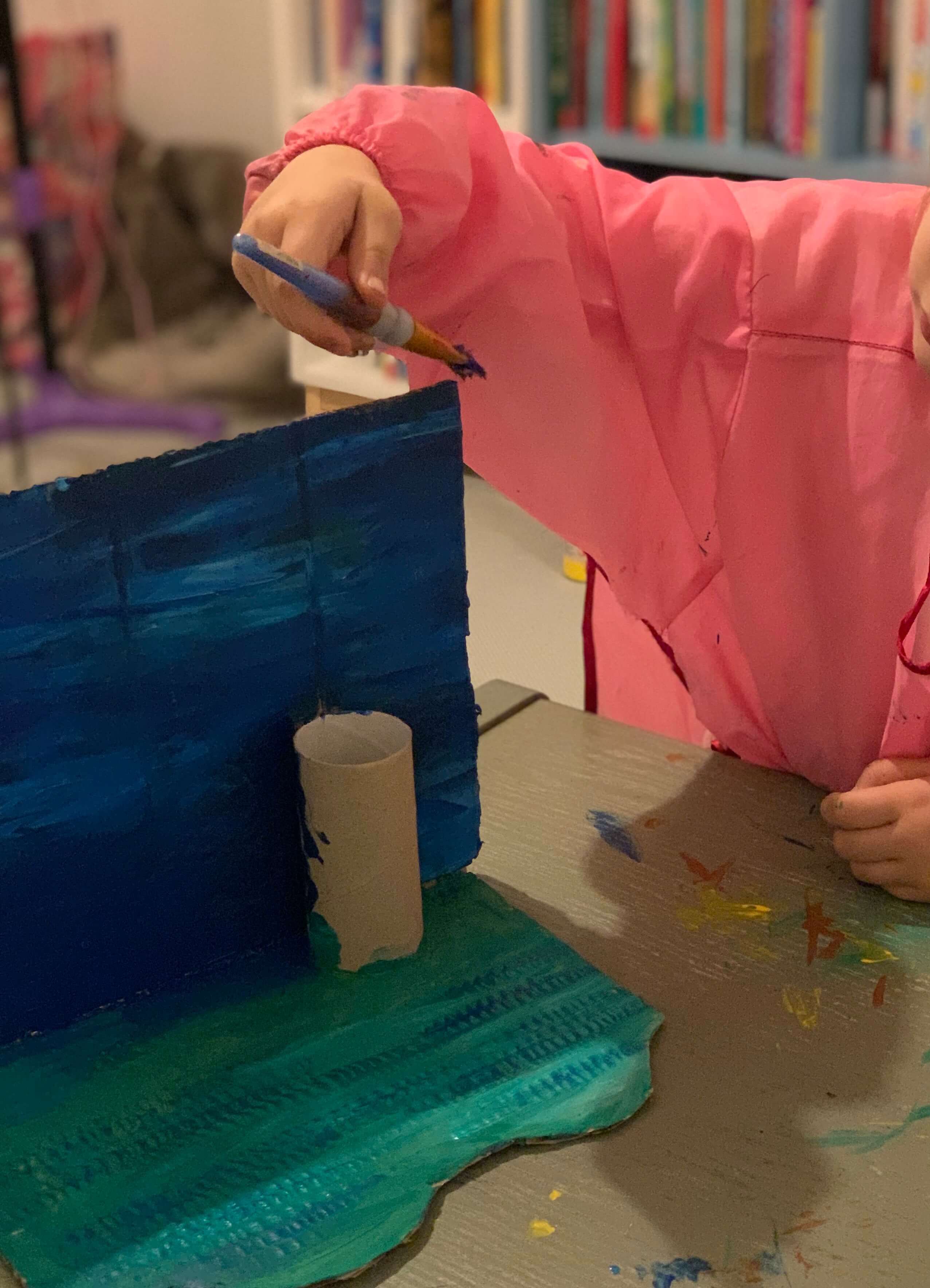
3. With the acrylic paints, paint the base green and the background blue-white.
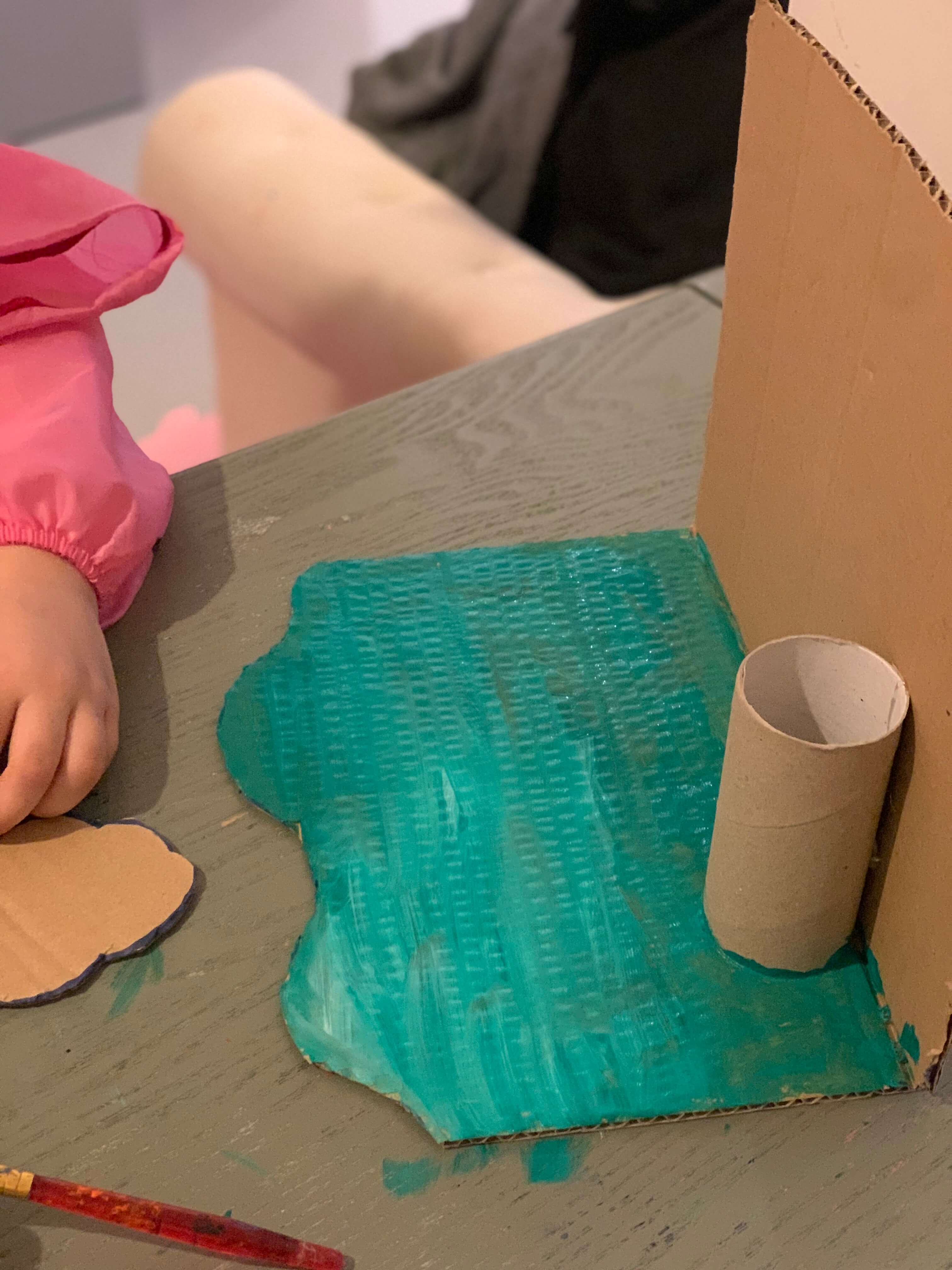
4. Glue the roll of toilet paper to the edge of the construction with the hot glue

5. Paint the individual elements respectively (tree trunks, foliage, sun and rays. Let them dry.
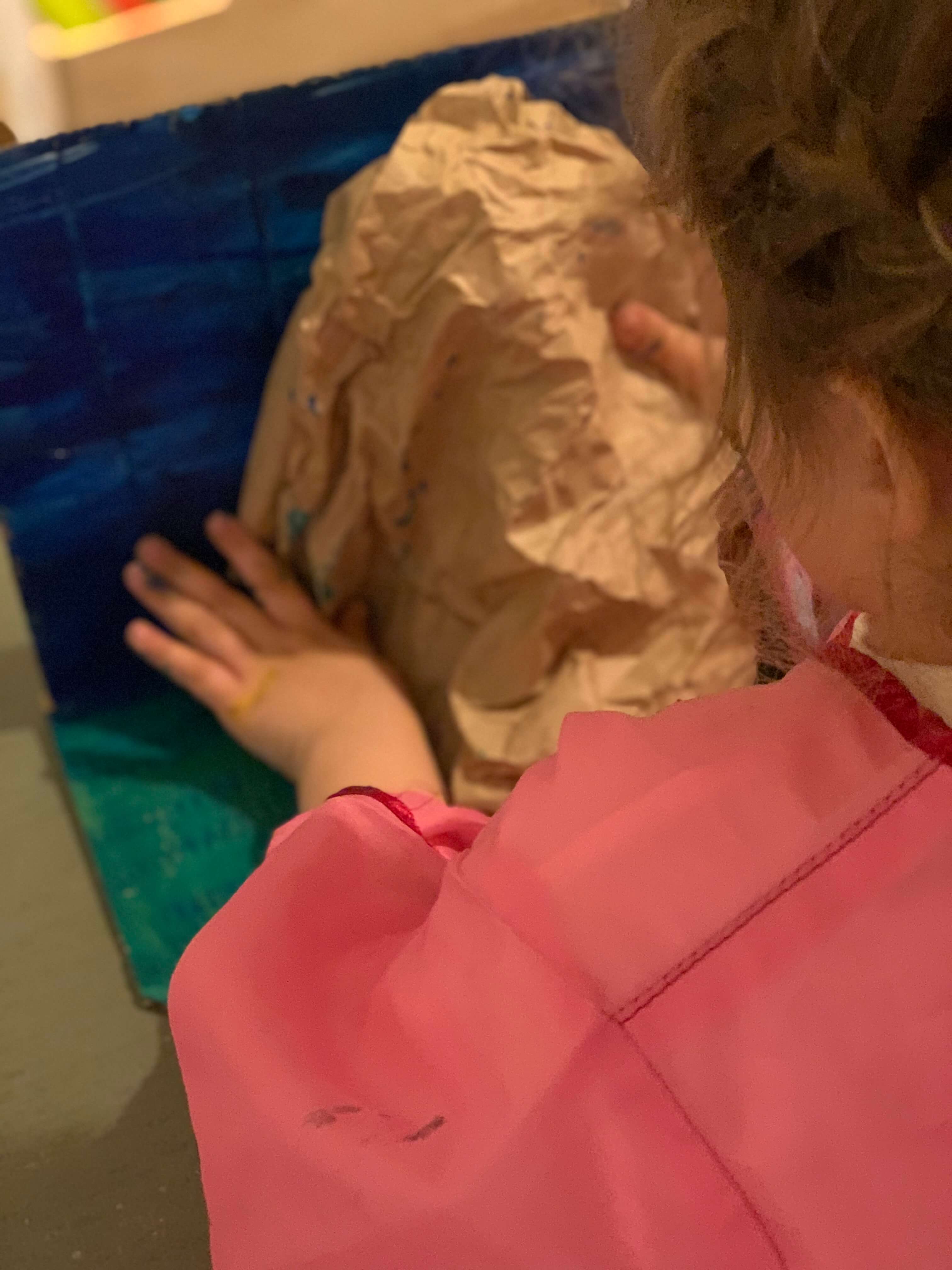
6. Crumple the craft paper and stick it with the hot glue over the roll, forming a volume like a small mountain.
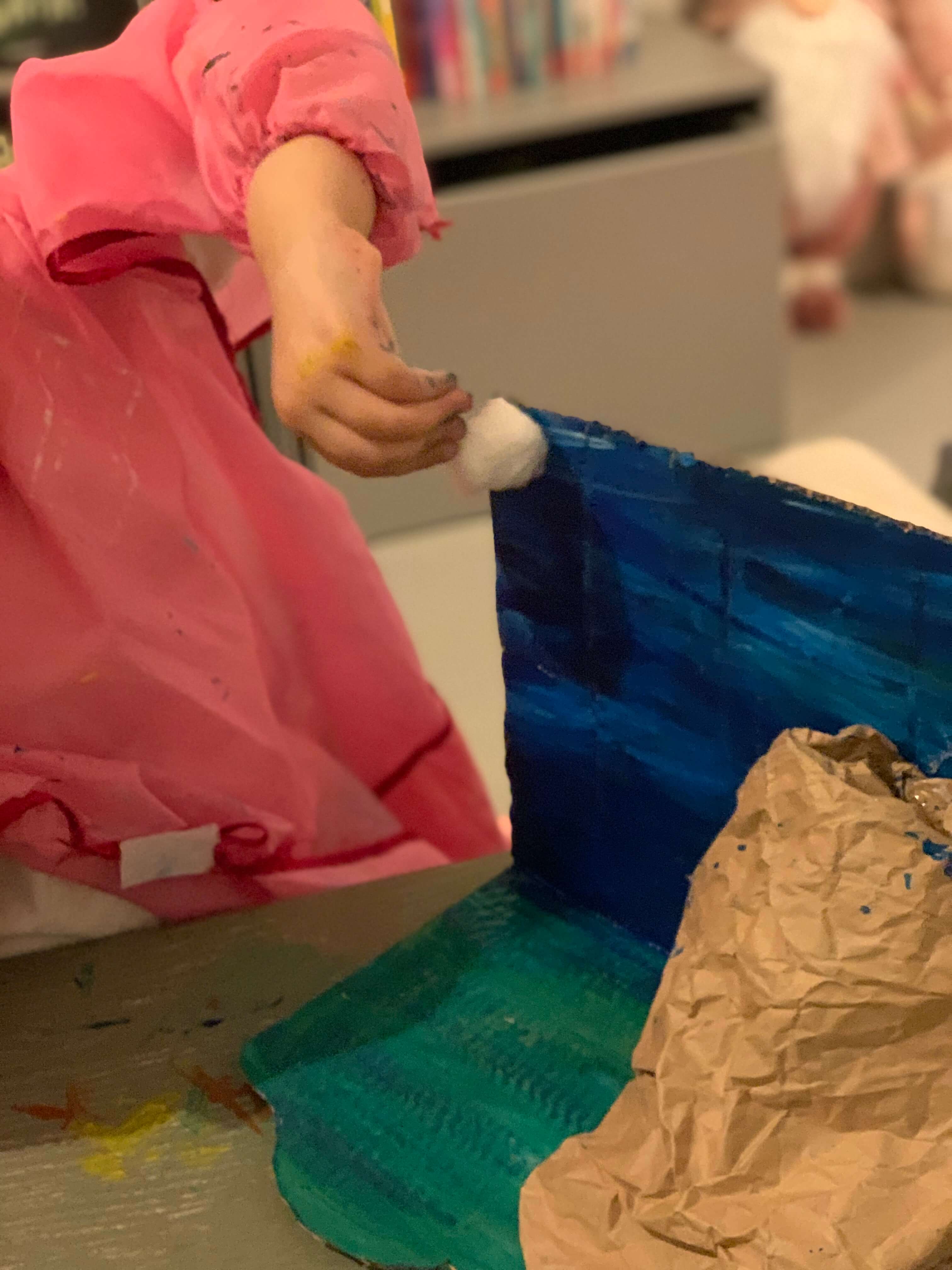
7. In the background stick the sun with its rays, opposite to the volume of the mountain. On top of the mountain dilute two small pieces of cotton, to form small clouds and stick them on the background.
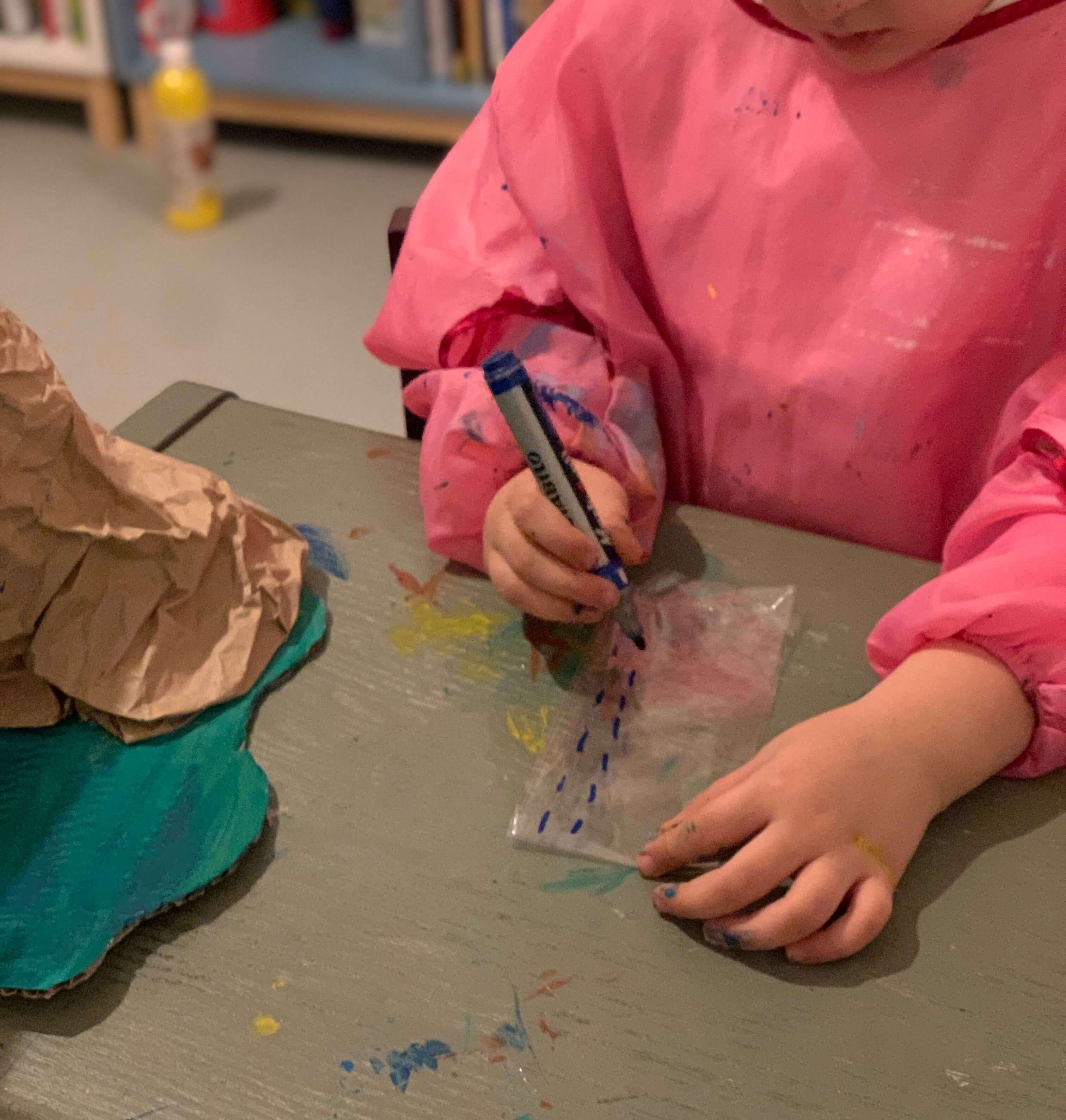
8. From the transparent cellophane cut a rectangle that will connect the ground with the cloud. On the cellophane draw dashed lines, giving the feeling of water evaporation. Stick it in one of the two clouds.
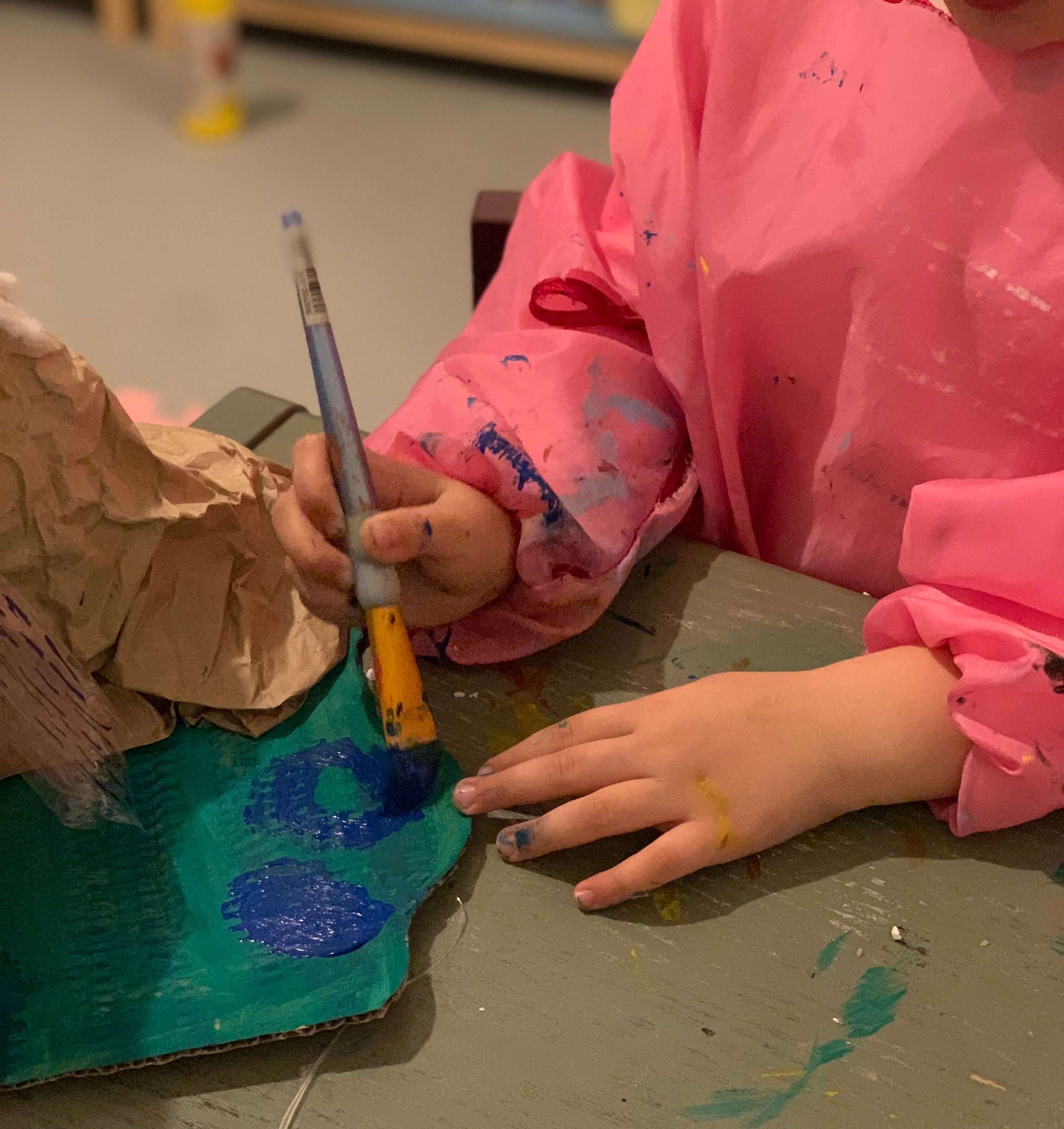
9. At the end of the cellophane paint a pond on the ground.
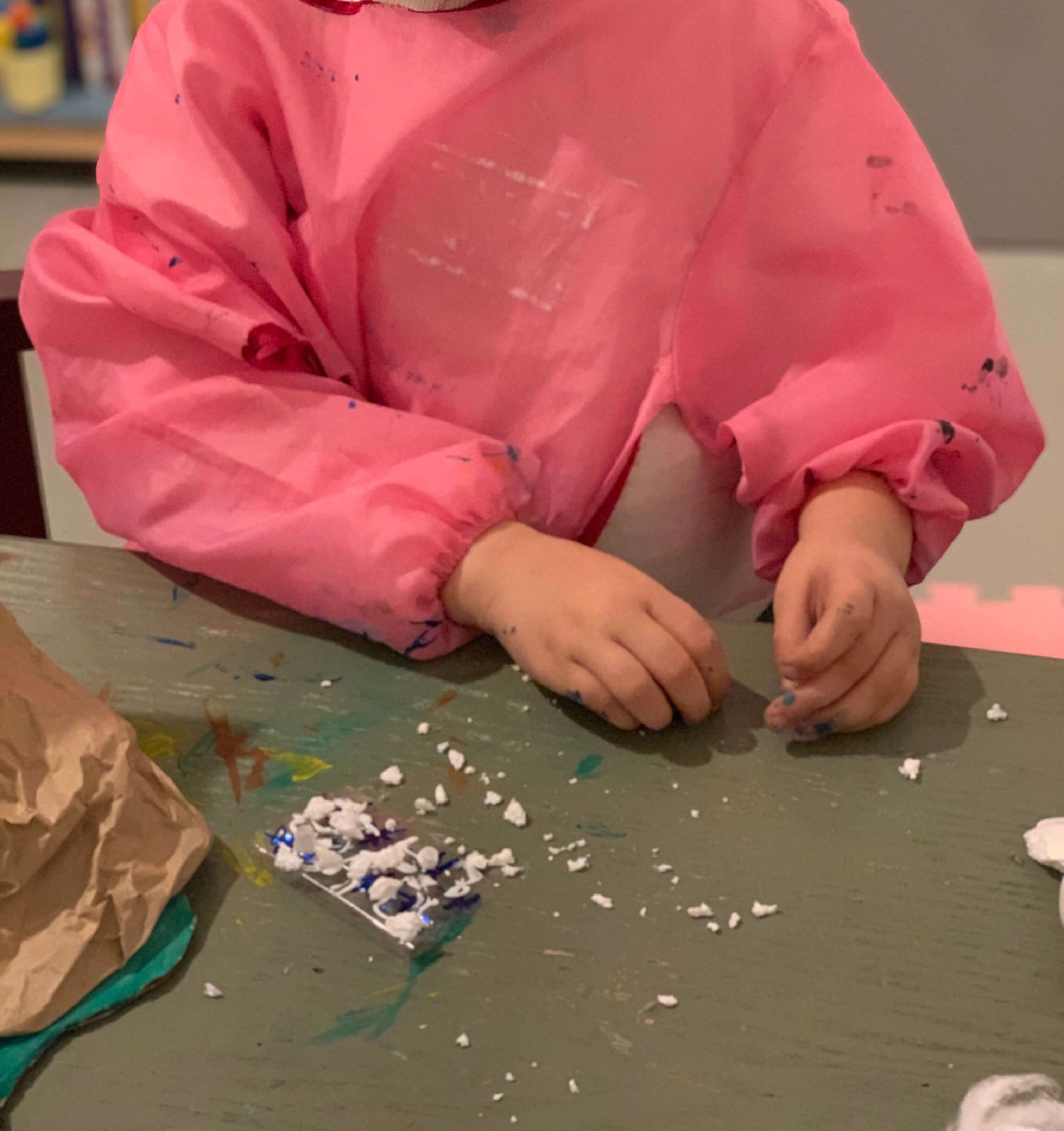
10. Cut a smaller piece of cellophane and glue the styrofoam shavings. Stick this piece to the second cloud, imaginatively joining it with the top of the mountain.
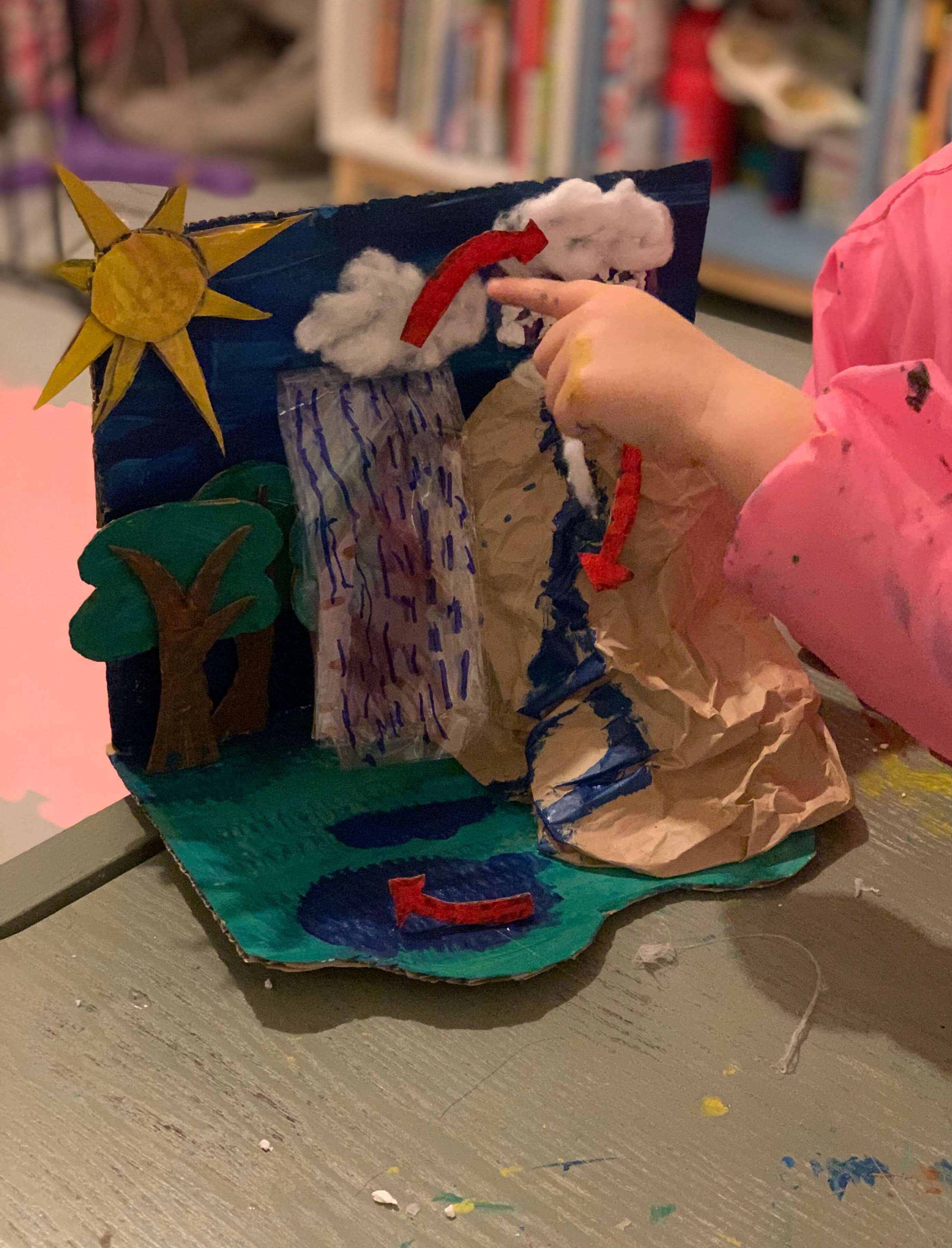
11. Paint a narrow strip of blue that starts from the top of the mountain and ends at the pond.
12. Place a little cotton on top of the mountain.

13. Finally stick the darts in a circle on our construction to show the circular travel of water.
Share your constructions on Instagram and don't forget to mention us at @thewonderroomgr. We will be very happy to see them!
tag:Wonder Wall


